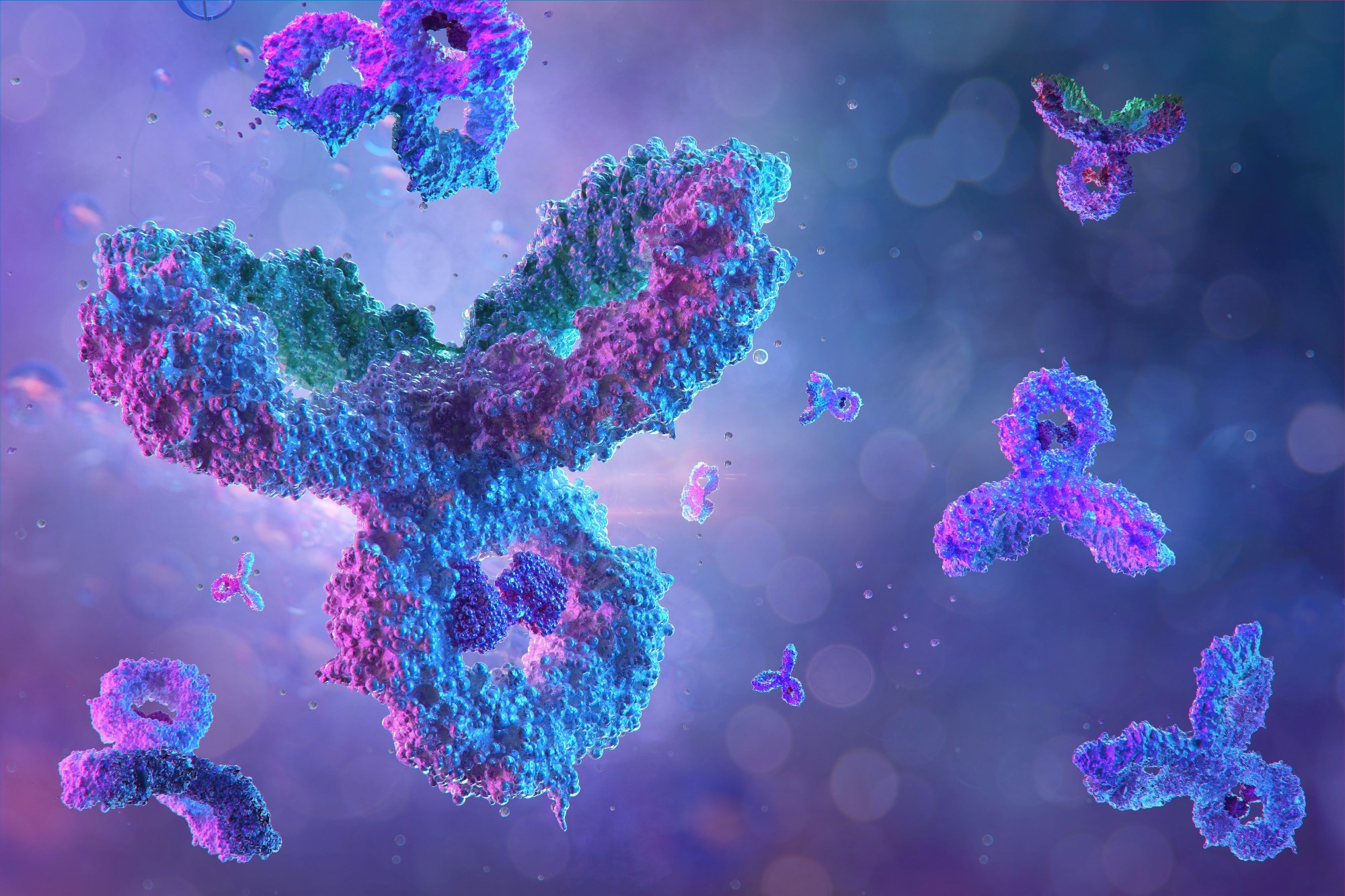COVID-19 vaccines with broad cross-reactive activity against severe acute respiratory syndrome coronavirus 2 (SARS-CoV-2) variants of concern (VOC) or across sarbecoviruses continue to be a health priority and neutralization responses against viruses are the best correlates of protection (CoP). Data on the comparative efficacy of different vaccination regimens and the impact of immune priming with previous infections or vaccinations could aid in the development of improved vaccines.
 Study: Priming conditions shape breadth of neutralizing antibody responses to sarbecoviruses. Image Credit: Corona Borealis Studio / Shutterstock
Study: Priming conditions shape breadth of neutralizing antibody responses to sarbecoviruses. Image Credit: Corona Borealis Studio / Shutterstock
About the study
In the present observational study, researchers assessed the breadth and magnitude of nAb responses elicited after the third vaccination with BNT126b2 or Coronavac after two homologous doses of either of the two vaccines against SARS-CoV-2 and other sarbecoviruses.
Serum samples were obtained from individuals who had received double or triple BNT162b2 [messenger ribonucleic acid (mRNA) vaccine] or Coronavac (inactivated SARS-CoV-2 vaccine). The participants had a positive or negative history of SARS-CoV-1 or SARS-CoV-2 infections. Cross-neutralization efficacy of vaccines was assessed using multiplexed neutralization assays which were based on SARS-CoV-2 VOCs spike (S) protein receptor-binding domain (RBD), and SARS-CoV-1 and SARS-CoV-1-related bat viruses and pangolin viruses and SARS-CoV-2 and bat-origin viruses (such as LYRa11, Bat CoV WIV-1, Rs2018B, and RsSHC014).
Antibody responses generated by Coronavac vaccines were compared to those induced by BNT162b2 vaccines among infection-naïve persons. The third vaccine dose was administered after six months of the second dose. Acute (between day 0 and day 5 of infection) and convalescent (one to two months after infection) serum samples were obtained from COVID-19 patients with Omicron infections among individuals who were either naïve or recipients of BNT162b2 or Coronavac vaccines. Two-dimensional (2D) representations of the serum samples were generated to identify immune priming conditions that led to more potent and broader nAb responses against SARS-CoV-2 VoCs and other sarbecoviruses.
Results
SARS-CoV-2 or SARS-CoV-1 infections after BNT162b2 vaccinations and Omicron BA.2 breakthrough infections after either third homologous BNT162b2 vaccination or a heterologous BNT162b2 third dose after double CoronaVac or BNT162b2 vaccinations induced the broadest and strongest cross-neutralization for SARS-CoV-2 VOCs. Concerning sarbecovirus neutralization, SARS-CoV-1-infected individuals who received BNT162b2 vaccinations performed better than all the other combinations of vaccinations and/or infections.
ACE2 binding of S RBDs of the ancestral strain, the Beta Voc, and the Delta VoC by antibodies found in the multiplexed surrogate virus neutralization tests (sVNT) correlated with plate sVNT assays. Sera from convalescents with mild and ancestral strain SARS-CoV-2 infections demonstrated nAb responses for SARS-CoV-2 and its VoCs (Lambda, Alpha, and Delta), whereas nAb titers for other VoCs of SARS-CoV-2, SARS-CoV-1, and bat-origin sarbecoviruses were minimal. Further, the nAb responses were relatively short-term, with maximal potency in the first two months of infection, with levels <20% between day 80 and day 270. The bead and plate sVNT assay findings correlated with those of live viral neutralization assays for the Wuhan-Hu-1 (ancestral) strain and Beta, and Delta VoCs; however, such correlations were not observed for Omicron BA.1 variant bead sVNT assays, which weak correlated with Omicron’s BA.1 plaque reduction neutralization tests (PRNT) and plate assay findings.
BNT162b2 vaccinations substantially boosted nAb titers against 10 (out of 16) S RBDs of all SARS-CoV-2 VoCs excluding Omicron, pangolin Gx-P5L, and bat RaTG13 viruses but not SARS-CoV-1 and SARS-CoV-1-related sarbecoviruses. However, Coronavac boosted nAb responses for 50% of S RBDs with lesser magnitude. Post-vaccination, BNT162b2-induced sVNT nAb responses were significantly greater than Coronavac-induced responses in 10 (out of 16) S RBDs. Taken together, the magnitude of nAb responses induced by Coronavac was significantly lesser than those induced by BNT162b2 and none of the Coronavac-induced responses exceeded the 20% S RBD inhibition/neutralization cut-off.
A year post recovery from Wuhan-Hu-1 strain-induced mild infections, BNT162b2 vaccinees elicited high (>50%) nAb responses for all SARS-CoV-2 VoCs inclusive of Omicron, RaTG13, and Gx-P5L; however, SARS-CoV-1 and the other sarbecovirus neutralization was low (20 to 50%). Coronavac elicited >20 nAb titers for 15 (out of 16) S RBDs; however, nAb responses against nine RBDs (Lambda, Delta, Alpha, Gx-P5L, and RaTG13) were substantially lower than those elicited by BNT162b2.
Priming by SARS-CoV-1 exposure before 18 years of BNT162b2 vaccinations (n=7) induced pan-sarbecovirus nAbs for SARS-CoV-1 and 2. The post-third BNT162b2 dose after Coronavac or BNT162b2 priming substantially boosted nAb responses for 13 and 14 RBDs, respectively. While Coronavac priming after the third Coronavac dose substantially increased nAbs for five RBD proteins, the strength of neutralization was significantly lower compared to the third BNT162b2 dose. However, no nAb boosting was observed among recipients of the third Coronavac dose after two BNT162b2 doses.
BA.2-infected and recovered BNT162b2 vaccinees showed substantially enhanced nAb responses for six SARS-CoV-2 S RBDs recovery; however, the neutralization magnitude didn’t increase after the acute phase. Coronavac-primed persons who recovered from Omicron BA.2 infections showed substantially increased nAb titers for four SARS-CoV-2 RBDs at recovery. Contrastingly, Omicron BA.2-recovered persons not primed with infection or vaccination did not show increases in nAb titers.
Overall, the study findings highlighted the efficacy of different immune priming conditions with or without prior infections and/or vaccinations, and that BNT162b2 was superior to CoronaVac in conferring immune protection against SARS-CoV-2 and other sarbecoviruses.
Important notice
Research Square publishes preliminary scientific reports that are not peer-reviewed and, therefore, should not be regarded as conclusive, guide clinical practice/health-related behavior, or treated as established information.
Journal reference:
- Priming conditions shape breadth of neutralizing antibody responses to sarbecoviruses. Janice Jia, Chee Wah Tan, Samuel Cheng, Haogao Gu, Aileen Yeoh, Chris Ka Pun Mok, Yanqun Wang, Jincun Zhao, Nancy Leung, Benjamin Cowling, Leo Poon, David Hui, Lin-Fa Wang, Malik Peiris, Sophie Valkenburg. Research Square preprint 2022, DOI: https://doi.org/10.21203/rs.3.rs-1790314/v1, https://www.researchsquare.com/article/rs-1790314/v1